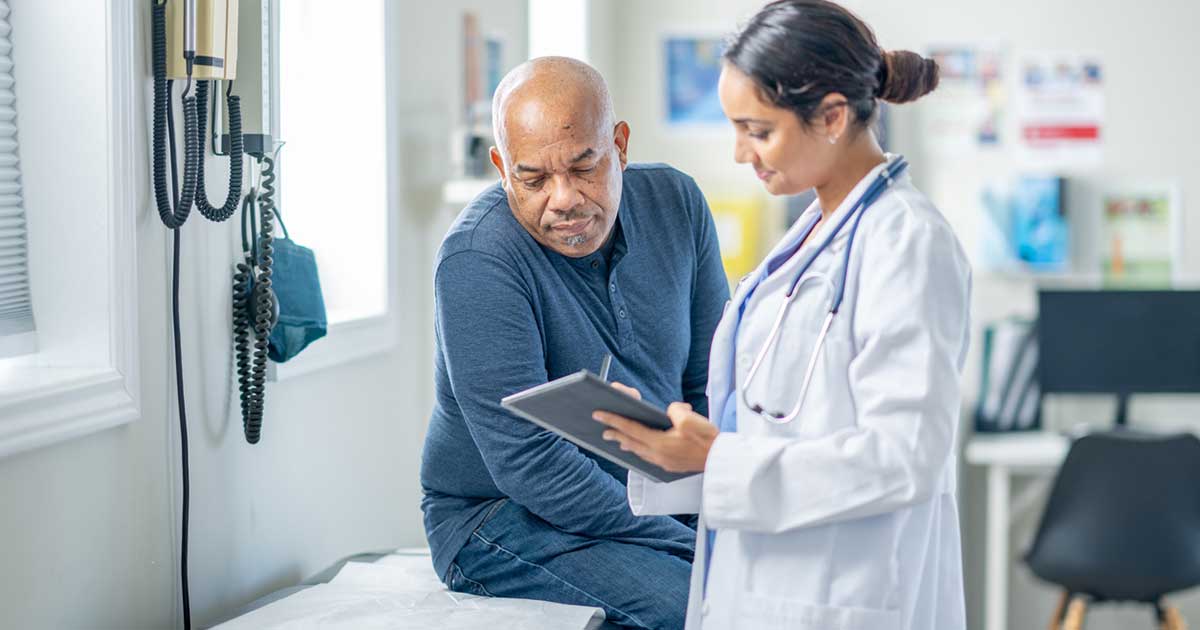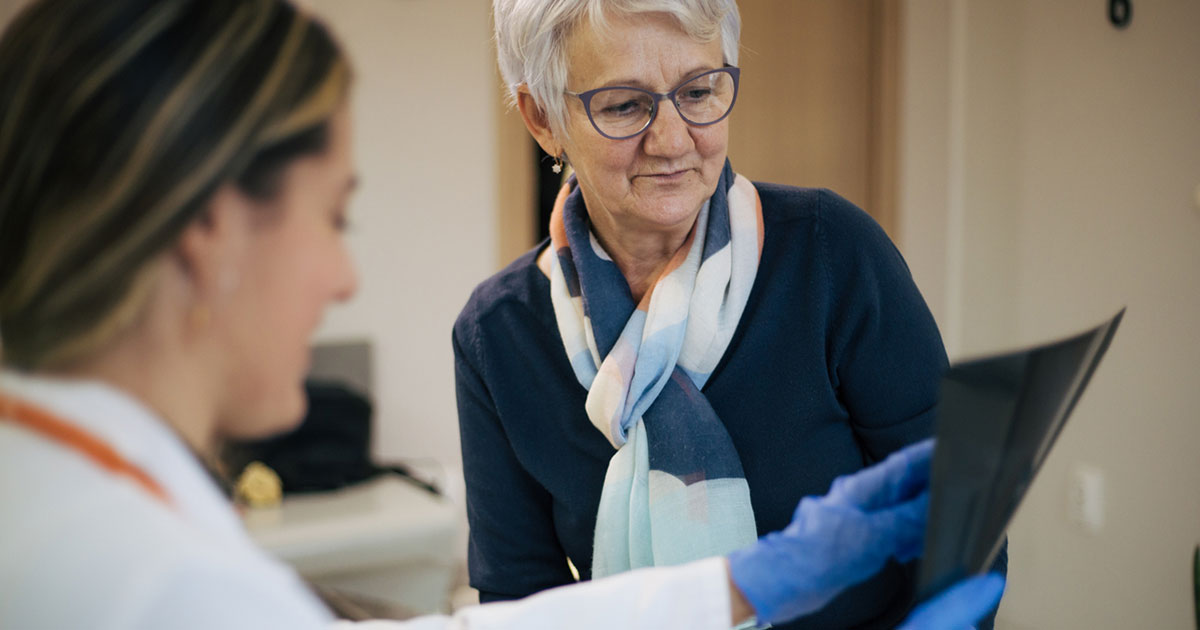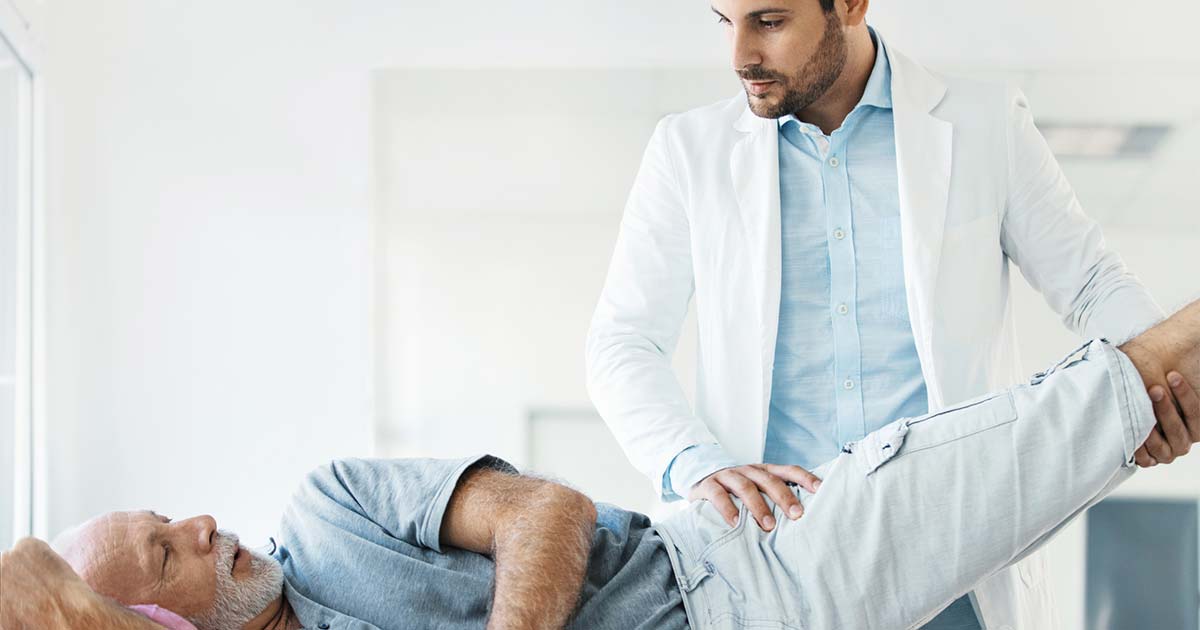What to Know about Hip Pain When Walking
Advice to improve your movement, fitness, and overall health from the world's #1 in orthopedics.
You probably don’t think much about how to walk – you just put one foot in front of the other. And you probably think even less about your hips when you’re walking (or sitting or climbing steps). But your hips make it possible to do all these things, plus bend and even rotate to see what’s going on behind you.

“Your hips are the strongest area of the body,” says HSS physiatrist George Cyril, MD. “It’s the main source of power that allows competitive power lifters to squat and deadlift nearly 1,000 pounds.”
Anatomy of the hip
In order to keep your hips injury-free, it’s helpful to know a little more them. The hip is made up of two bones: The thighbone, also called the femur, and the pelvis. The femur and pelvis connect at the hip joint, a ball-and-socket joint where the head of the femur (femoral head) rests inside a cup-shaped structure called the acetabulum, which is part of the pelvis. “It’s the ability of the ball of the femur to rotate in all directions within the acetabulum that allows you to move freely,” explains Dr. Cyril.
In a healthy hip, articular cartilage, a smooth protective liner, limits friction between the joint surfaces during movement. A piece of soft tissue called the labrum, which is made of fibrocartilage, lines the outer rim of the hip socket to create a suction seal that helps hold the ball-like femoral head in place.
Possible causes of hip pain
Unfortunately, because the hip joint takes a lot of the brunt forces when walking and doing so many other activities, injuries do happen. Some of the most common reasons for hip pain include:
Osteoarthritis. As we age, the cartilage between the bones and joints become inflamed and degenerates. With less cushioning between them, the bones and joints begin to rub against each other, causing pain and diminished range of motion. The pain caused by hip arthritis can worsen over time and include stiffness and swelling.
Labral tear. The labrum is a crescent-shaped rim of cartilage that lines and reinforces the hip joint. Repetitive motion or a fall can damage the labrum, including a hip labral tear or even a detachment of the labrum from the hip socket.
Tendonitis. When the thick bands of tissue that attach the bones to muscles get inflamed or irritated, tendonitis can happen.
Bursitis. Bursae are small sacs of fluid located near the joints that help cushion the areas between tendons, ligaments, and bones. Sometimes the bursae become inflamed or irritated, typically from repetitive movement, which can lead to hip bursitis.
Muscle or tendon strain. Repetitive motion, particularly from running or cycling (or even walking) can strain the muscles, tendons and ligaments that support the hips. Strained hips can cause pain and prevent the hip from working normally.
Avascular necrosis. While not as common as the other conditions, avascular necrosis happens when the hip loses blood supply and parts of the bone die off. It can happen as a result of trauma, steroid use, excessive alcohol consumption or after certain medical treatments like radiation.
Because you can feel hip pain in several areas, including the thigh, inside of the hip joint, the groin and the buttocks, it can be difficult to pinpoint what type of hip issue it may be or even whether it’s truly hip pain at all. Some clues: Because arthritis and labral tears live in the socket, the pain for these two conditions tends to be a dull, achy, sometimes throbbing pain mostly in the front of the hip, but that can also radiate to the groin, down to the knee and occasionally into the buttocks, says Dr. Cyril.
“Because tendonitis and bursitis happen in the tendons, and you have muscles and tendons in the front, side, and back of the hip, you may feel more of a burning pain that can be in the side of the hip, or inside, near the groin. And avascular necrosis feels achy and throbby, similar to arthritis,” he adds.
Learn more about when to see a doctor for hip pain.
Walking techniques to reduce hip pain
Regardless of the cause of your hip pain, it’s important to stay active while minimizing your risk for more problems down the road. Dr. Cyril offers these tips for hip-healthy walking:
- Always wear comfortable, non-slip shoes, with a soft sole that absorbs impact when you walk on hard surfaces.
- If you have arch issues, look for inserts to take stress off the hip. You can buy them over the counter or a podiatrist can create a custom orthotic.
- Avoid walking in total darkness, particularly on uneven surfaces, to avoid injury. Use the flashlight on your phone if you have to.
- Walk with good form.
- Imagine reaching the ceiling with your head. Your shoulders should be back and down, your arms bent naturally at the elbow. Your pelvis should be tucked under your torso and stomach pulled in tight.
- Put your heel down first, roll through the rest of your foot, then push off from your toes.
- Don’t look down when you walk, which will strain your neck and back. Instead, look 15 to 20 feet ahead of you, keeping your chin level with the ground.
- If you want to go faster (if you’re power walking, for example), concentrate on driving your elbows back and forth, alongside your body (not side to side across your chest). Your feet will naturally follow.
Published 6/23/2022





